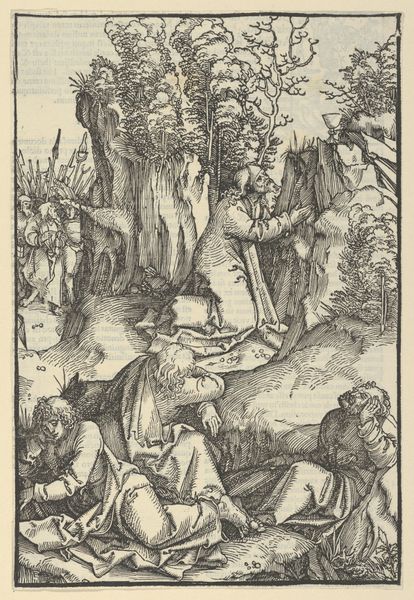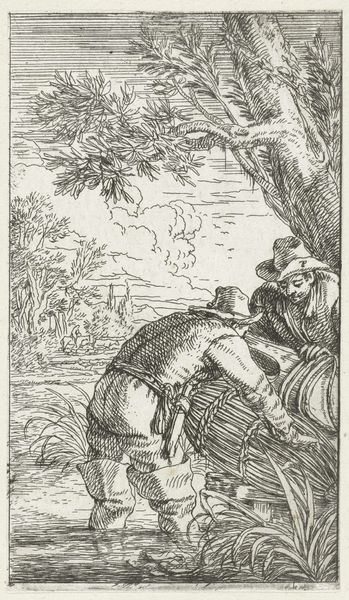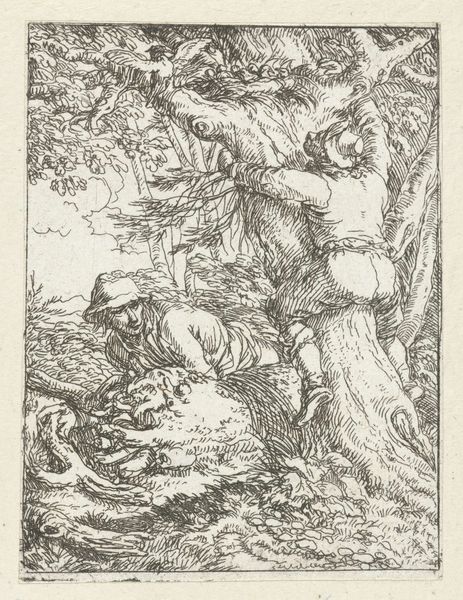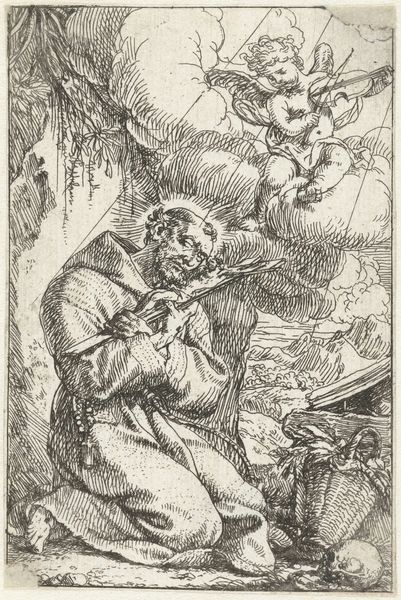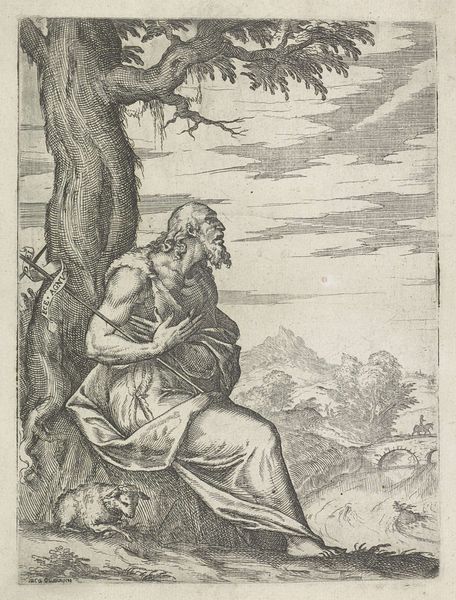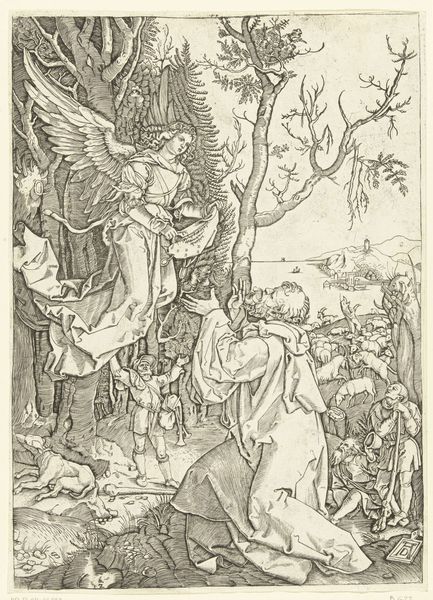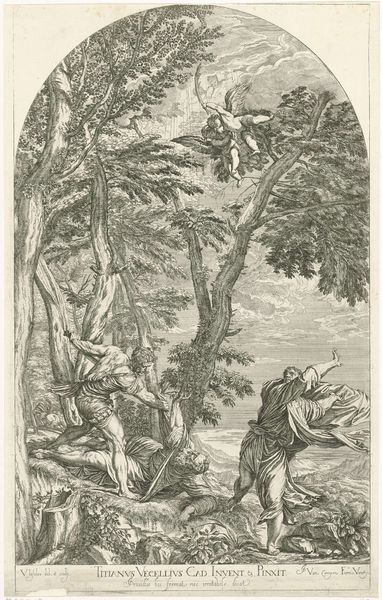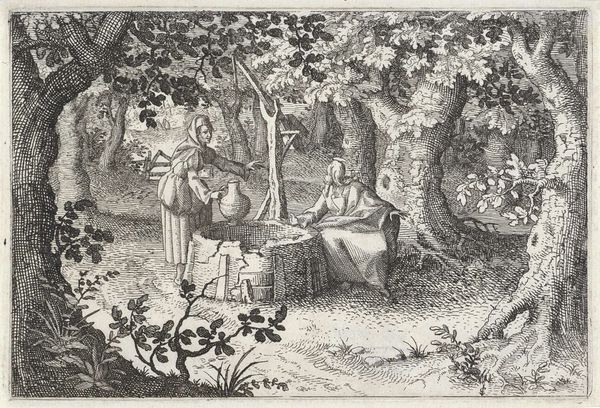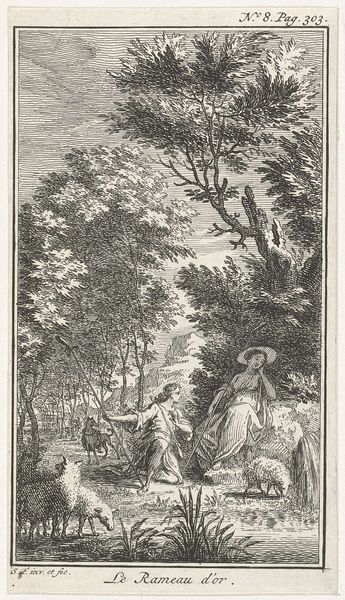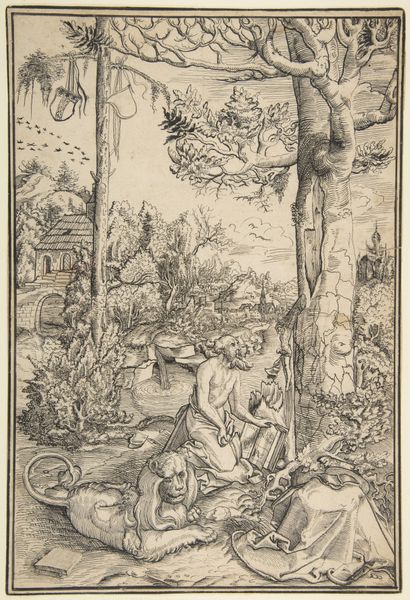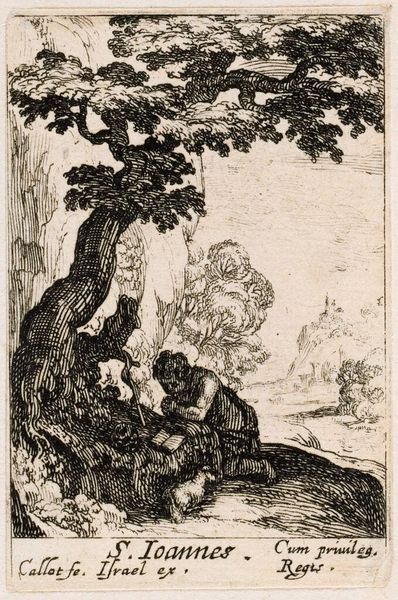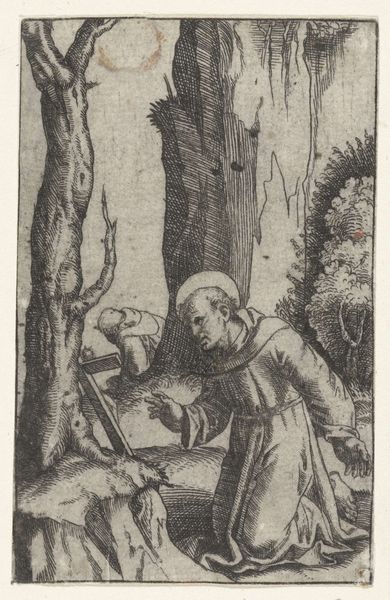
print, etching
#
baroque
#
pen drawing
# print
#
etching
#
landscape
#
figuration
#
genre-painting
Dimensions: height 160 mm, width 98 mm
Copyright: Rijks Museum: Open Domain
Curator: Let's talk about Jonas Umbach's etching, "Vogeljagers met uil", created sometime between 1634 and 1693. It’s part of the Rijksmuseum’s collection. What’s your first impression? Editor: I’m struck by how dark the piece is. It seems almost clandestine, two figures lurking in a dense forest, up to no good. There's a predatory feeling despite the stillness. Curator: Indeed. The figures, bird hunters in this case, blend seamlessly with the environment, suggesting a world where human labor is intricately woven into the fabric of nature's cycles. Notice the dense etching, creating varied textures throughout; the lines give shape to every leaf and feather. Editor: The owl is intriguing; it's prominently perched as if watching over them. Owls are commonly linked to wisdom and prophecy, but they also have associations with the night and death. Here, the hunters seemingly ignore this ominous sign as the flock flies into their trap. What is Umbach suggesting about human arrogance here? Curator: Interesting! It also highlights how these seemingly distinct activities are interrelated through the material fact of consumption; hunting yields a product that, for Umbach's contemporary audience, fulfilled certain social and economic functions. This contrasts markedly with the symbolic weight you attach to it. Editor: But even their tools speak volumes! The design of their archaic hunting implements echoes a certain desperation, a striving for control over the natural world—and the owl watches silently. I find this relationship unsettling, laden with a tragic dimension where symbols of death and knowledge hover above. Curator: Fair enough. For me, I view Umbach using line and shade to emphasize the back-breaking effort needed to ensure the success of this hunt, focusing on depicting work that is often idealized as "noble", whereas he draws focus onto how labor determines social structures and shapes experience. Editor: Ultimately, I can't help but think the owl knows more than those men believe they do; such detailed art provokes strong associations with vanitas and warnings against excess. Curator: Perhaps a fusion of our views might bridge both concerns: highlighting consumption practices along with the rich, psychological depth. Editor: An intersection of production, labor, and deeper symbolic understanding... Not a bad place to conclude!
Comments
No comments
Be the first to comment and join the conversation on the ultimate creative platform.
